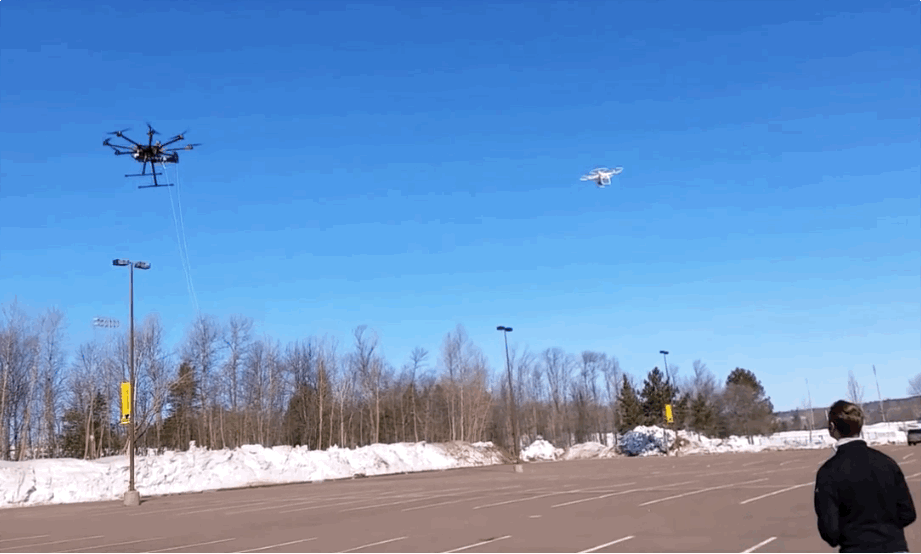Category Archives: Robotics
Designer Prosthetics

Everyone who knows me knows I’m big on design, a proponent of the interdependence of form and function. Strict utilitarianism just doesn’t move me, or anyone else for that matter. Working well and looking good are not mutually exclusive, and if something achieves both goals then that’s a triumph of both form and function.
Now, we’re seeing design principles applied to the development of prosthetics, and it absolutely beautiful. The latest example I’d like to present is form a company called Open Bionics, who is making prosthetics that are not only especially functional, but easy on the eyes as well.
We can even bypass the neat prosthetics they make for kids that are modeled after superheroes or movie characters. You can see in the image below they have designs from Iron Man, Disney’s Frozen, and Star Wars. What’s really significant about designs like these is not that the designs themselves or even that they can be applied in such an interesting way, but that kids who are missing a limb are no longer the target of teasing or ridicule because of their condition, but rather a source of interest and awe, perhaps even some envy of the other kids. How the times have changed!
Not easy to watch, but important

It might even be NSFW, but not for the reasons you think. I’m honestly not sure of a way to introduce this gently, so I’ll just tell you what it is.
Here at UCI, I receive via email a daily digest entitled “UCI in the NEWS.” Whenever a UCI member is cited in a news source, whether local, regional, national, scientific, or other, they are added to the digest and we can find out all the ways the expertise here is being shared with the world. Usually I skim through it, sometimes clicking the summary link to find out more information.
The one I received today had a a story titled “UC Irvine doctor is live-streaming his colonoscopy.” How could I not watch that? Maybe get a pizza for the experience. Unfortunately, it happened at 8am the same day I received the email, so it was all over.
But you’re in luck! The page on which it was done is still up, and you can still watch the video. and while I’ve had a somewhat snarky attitude towards it thus far in this post, as the page explains it was all done for a very good cause. It provides some statistics about colorectal cancer, the importance of early detection (it can be treated *if* it’s found early), and for people who will need to be having the procedure done on themselves or a loved one soon, it might give you an idea of what to expect. You probably don’t want to know this, but I’ve been through it myself, and as I approach 50 it’s something I will need to be more aware of. It’s not a very pleasant thing, but it is absolutely an important thing, perhaps even a life-saving thing.
I’ve embedded the video below, and it *is* educational and a novel use of livestreaming, but I also really encourage you to visit the page and read about the importance of the procedure. Hopefully it helps some people get more comfortable with what will be an inevitable medical procedure eventually.
What just happened?

In case you haven’t heard, there are competitions to see who can solve a Rubik’s Cube the fastest. It’s called cubing. And there are sites where you can learn about it and pick up new techniques (such as the Fridrich Method) and advice, such as the importance of keeping your cube lubricated. Seriously. There’s even official Rubik’s Lube. The people who do it refer to themselves as cubers, and the activity of solving a Rubik’s Cube as cubing. And they are fast. Very fast, with some solving it in under five seconds.
There’s even a World Cube Association and they have regulations on how a cube must be scrambled.
Why am I bringing this up? Because as is or will be the case with everything eventually, they were all just bested by a robot. A robot that can solve a Rubik’s Cube so fast the eye can barely register it. In under one second, .887 seconds to be exact, the cube is turned from a random mishmash of colors to a thing of six-sided, solid color beauty.
It was done using an interesting process, in which two open-shutter cameras took a picture of three sides of the cube, an algorithm on a connected laptop worked out the solution, then passed that solution to an Arduino controller that executed the previously-determined solution. It did this by anchoring the center square of each side with an arm, while also using that arm to spin its respective side. It sounds far better if I just paste the description from the YouTube page:
Prior to the world record attempt a WCA-conform modified speed cube was scrambled with a computer generated random array and positioned in the robot. Once the start button was hit two webcam shutters were moved away. Thereafter a laptop took two pictures, each picture showing three sides of the cube. Then the laptop identified all colors of the cube and calculated a solution with Tomas Rokicki’s extremely fast implementation of Herbert Kociemba’s Two-Phase-Algorithm. The solution was handed over to an Arduino-compatible microcontroller board that orchestrated the 20 moves of six high performance steppers. Only 887 milliseconds after the start button had been hit Sub1 broke a historic barrier and finished the last move in new world record time.
What’s truly amazing is that because it still utilized a multi-step process that handed off functionality two separate times, the time could still be significantly reduced! Watch the video, then watch it again because you’ll miss the actual solving-the-Rubik’s-Cube part. It’s quite incredible.
The Ogre-Faced spider of drones

As many of you know, I considered going to grad school for biology, specifically because I wanted to investigate the cognitive capabilities of spiders. I believed there were certain species of spider that had the genuine ability to think and plan out strategy, and although I decided to pursue another path, I would also like to note that I have since been proven right. I knew it all along. Not all of them have the ability to think, of course, in fact I frequently use the example of a black widow and her behavior to illustrate concepts in artificial intelligence, specifically to define what is and isn’t intelligence.
So if you take a look at the lovely lady in the header image, you’ll see a spider that is unique in many ways, not the least of which is that it has two different and distinct colloquial names – one based on her appearance, and one based on her behavior. That’s unusual in the insect kingdom (which isn’t really a kingdom in the biological sense, but you know what I mean). Her first name is the ogre-faced spider, for reasons I think are pretty obvious. Her other name, however, is the one we’re concerned with and it describes not just her behavior but what I believe is at least a low-level ability to cognate: the net-casting spider.
That’s right! This spider makes a net, waits for some unsuspecting bug to mosey underneath, then not only traps the bug in the net, but will expand the net to fit the bug if necessary, or in some cases allow the bug to pass if she feels it will put up too much of a fight. And people say spiders can’t think. Or maybe they don’t say that, but if they do, they shouldn’t.
So why all the talk of spiders that can do the thinky thinky? Well, besides the fact that I use spider cognition – insomuch as it is – to explain artificial intelligence concepts, the netcasting spider is also the first thing I thought of when I saw this post over at Engadget: It turns out students at Michigan Tech are developing a drone that, just like the netcasting spider, can throw out a net to catch other drones in midair! How badass is that? Here’s the gif, borrowed from Engadget’s post:
The designers call it ‘Robotic Falconry,’ which makes perfect sense if you’ve ever seen a falcon hunt; they often pluck their prey, if it’s a bird, out of midair. The rogue drone, as it were, is similarly plucked right out of the air via net and hauled away, helpless, to someplace for…well, I’ll say tea and cake, but more likely disassembly.
I like this idea. It seems a less-lethal way of dealing with a rogue drone. If you think that perhaps this is addressing an issue that isn’t a real problem, you might want to read this post from Ars Technica. We don’t want to see anyone get hurt, and this guy was ready to do it. There’s a fascinating follow-up to that whole thing as well that could set law and policy about drones and would necessarily be very wide-ranging, covering ownership, privacy, property, and how all these things interact and overlap where drones are concerned. Additionally, as Engadget’s post also points out, Japan is testing a net-casting drone because shooting them down could be harmful if they are loaded with a dangerous substance, a problem they’ve already had to deal with.
This could all be focused into something productive, though. What we REALLY need is some kind of gladiatorial drone-combat sport thing – that would be fun to watch. Just like the BattleBots competitions they have, drone wars could become a real thing. A real, exciting thing. Drones with nets, drones with lasers, drones that shoot flames and crash into each other. I’d watch that.



